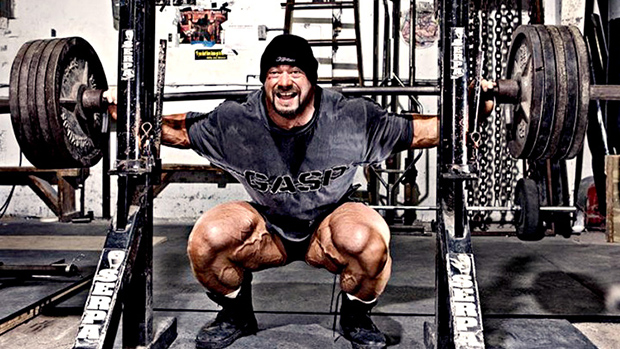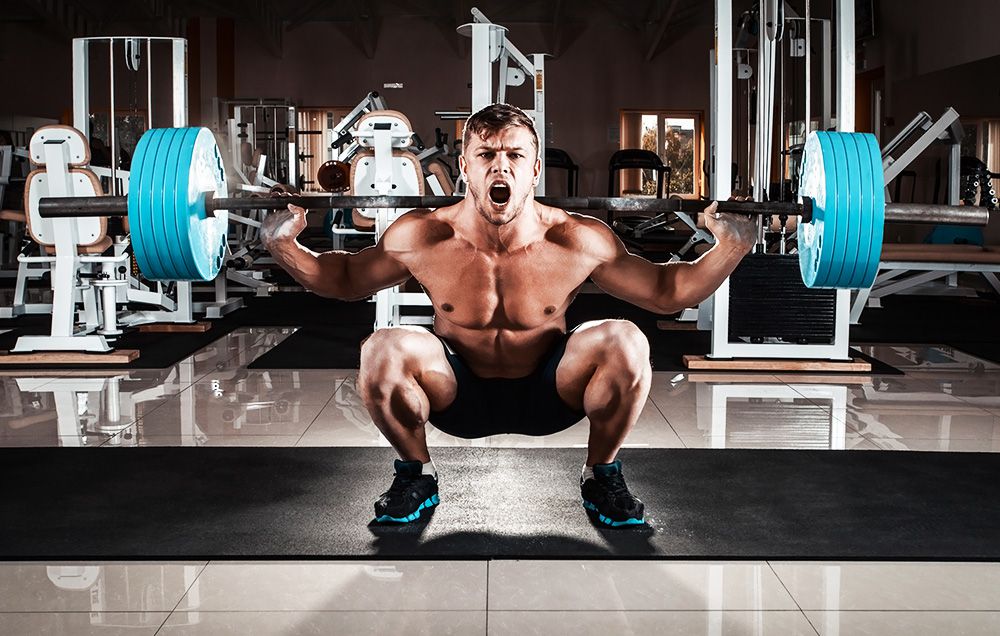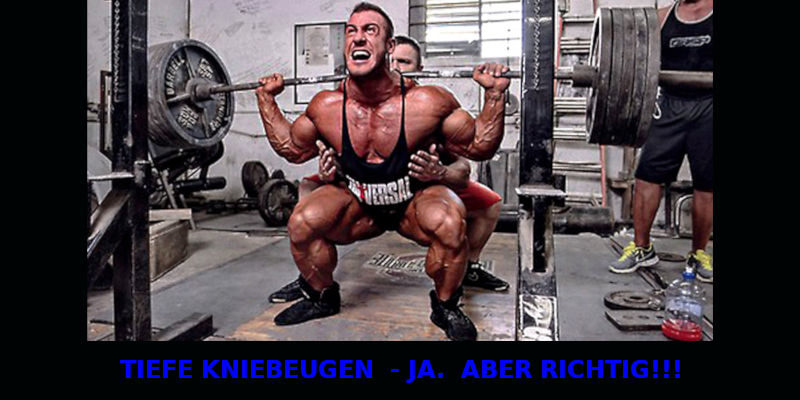The squat is one of the best exercises you can do. Unless you crouch deeply on the squat, you will continue to only build superficial strength.
DEEP CHALLENGE
Sure, squats are anything but easy to do. And Crouching deep is uncharted territory for many bodybuilders. If you go at Squats deeper than parallel (thighs are parallel to the floor), the hamstrings and glutes need to be more involved.
Then, with a little practice, these muscles will become stronger and stronger better equipped to get explosively out of the crouch.
Stronger hamstrings and glutes provide you with one greater strength potential in all other exercises.
This also applies to the strength-specific exercises of Olympic weightlifting and especially to the "Big Three": Bench press, deadlift and Squats.
Even if your trainer gives you tells something else: You can only go as far as the parallel that can be sheer Actually increase the force exerted on the knee joint - and this is not good.

If you've never gone deeper than parallel, you should however, don't just take your normal squat weight and bum up lower to the ground.
Deep squats have a number of specific requirements. So it's important to start with a very light weight. It is actually not a bad idea when warming up with a deep squat practicing empty dumbbell. Especially if you are used to it, just get into that To go parallel or stop the movement earlier.
The reason is: If you do the squat on a set Buttocks have never dropped to the floor, it could well be that You the flexibility in the ankles and hips as well as the strength of the trunk is missing to cope with such a large range of motion.
The key then is that you get down to the deep squat work ahead and start with your flexibility.
After you are thoroughly warmed up, complete a deep one Bend your knees with an empty dumbbell on your back. The heels may be off First detach from the floor and your back may be tense. But stay for 30 seconds in this deep squat. Then get up and leave down. After a few sets, your whole foot will be on the floor stand and feel a comfortable feeling in your knees and hips. Graduate Do some of these sets first before starting the squat program.
Ankles and knees, lower back and calves will soon better be familiar with this posture!

FÜSSE FLACH HALTEN
Remember, the best squats are when you can keep your whole foot on the ground. Squats where the Loosen your heels from the ground and put your weight on the balls of your feet, testify to bad posture and are potentially dangerous!
And the deeper you go down, the more you protect it lower back. So keep your back as straight as possible and avoid leaning too far forward as you descend.
You actually need your natural hollow back even more stress and maintain it throughout the sentence.
Another important point: try to use your feet pushing up off the floor so the force goes through your legs. So ensure Do not move your hips up faster than your torso. Because when that happens, the upper body can quickly lean forward, whereby the lower back wears out a lot. When you get powerful out of a straighten deep squat, then chest and upper body first. This is followed by the hips to protect the spine.
HOW DEEP CAN YOU GO?
Here is an example of a Leg workout that includes squats with varying exercise depths.
After the deep squats you can increase the weight and go parallel to the rack as well Do partial reps (upper portion of the range of motion only).
Be at the end of the workout the quadriceps be trained through the entire range of motion through they should be trained.
- deep squats
- parallel squats
- partial squats
- Romanian deadlift
- Leg stretches
CORRECT BREATHING = HOLDING BREATH
Speaking of the protection of the spine:
You need to breathe properly when doing deep squats. And in some cases, breathing properly means not breathing at all. Take a deep breath before the downward movement and hold your breath until the repetition is complete, including the upward movement.
Don't breathe out until you are almost completely upright again stand. This is because filling the lungs with air increases the pressure in the chest and Abdominal cavity and thus supports the spine.
Keeping your head in the correct position is extremely important for deep squats. You should be looking straight ahead. If you're too high looking up, you could lose your balance. And if your look goes too low, you may find yourself rounding your lower back and exercising a lot of force on the lumbar area. So look straight ahead with your eyes this keeps your head posture in perfect line with your upper body.
Finally, practice this new variation within the safe Limits of a power rack. This not only guarantees a necessary level of security, but you will also gain confidence in the process.
If you are just starting out with this type of squat, then focus less on the repetitions and more on those Technology. As you can see in the example workout, there is a higher number of repetitions totally okay.
Once you have gained flexibility, expertise and confidence you can change the weight and focus on specific goals like Concentrate on strength, speed or endurance.
- IFBB EUROPA PRO 2020 - RESULTS
- NEW YORK PRO 2020 RESULTS
- CHICAGO PRO 2020 RESULTS
- Keep POWERHOUSE BERLIN Oldschool gym from closing
- PHIL HEATH WANTS TO PARTICIPATE IN MR: OLYMPIA 2020

4 comments
Comments are closed.